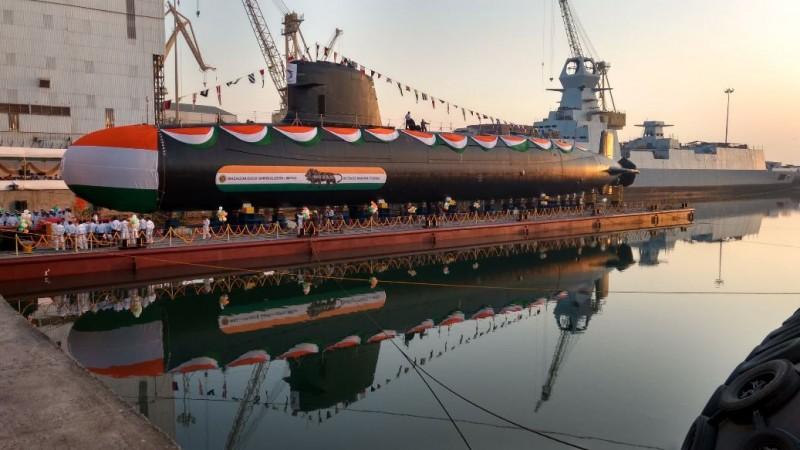
Months after Scorpene leaks threatened to divulge the secret behind India's submarine development project undertaken by technology transfer from French defence major DCNS, India has displayed poise and launched the second in the six Scrorpene-class submarines, INS Khanderi.
Read: India unlikely to go for additional Scorpene submarine order
INS Khanderi was launched by Minister of State for Defence Dr Subhash Bhamre along with Indian Navy chief Admiral Sunil Lanba and other dignitaries at Mazagon Dock Limited in Mumbai on Thursday, January 12.
INS Khanderi is the second Scrorpene-class submarine after INS Kalvari, which will be inducted into Indian Navy following sea trials soon. INS Khanderi is expected to be delivered to the Indian Navy by the end of 2017.
INS Khanderi is part of the Project 75 Scorpene submarines which is being manufactured by Mazagon Dock Shipbuilders Limited with Transfer of Technology (ToT) from DCNS as its collaborator.
The submarines from Project 75 will become the core of Indian Navy's conventional submarine arm.
The Defence Ministry says that the submarine is a "key milestone in self reliance and indigenisation for the country." The Naval chief has also compared it with the best in the world and says that it marks the "beginning of a new chapter in Indian submarine capabilities."
The name has been derived from an earlier submarine that was decommissioned from service in 1989. Khanderi is an island fort of Maratha forces that was vital for their supremacy at sea in the late 17th century.
INS Khanderi is a diesel-electric attack submarine and goes with the pennant S51. The submarine has around 50 days endurance, but reportedly doesn't have the air-independent propulsion (AIP) system. But it will be fitted with torpedos, Exocet anti-ship missiles and mines when inducted in the Indian Navy.
INS Khanderi will also be able to undertake missions like anti-surface warfare, anti-submarine warfare, intelligence gathering, mine laying, area surveillance and others.
@SpokespersonMoD @makeinindia Pre launch Ceremony in progress at Mazgaon Docks pic.twitter.com/vxJA0x6Qtx
— SpokespersonNavy (@indiannavy) January 12, 2017
@SpokespersonMoD @makeinindia @DrSubhashMoS #MDL #P75 Launch of Khanderi a very proud occasion for us as a nation - Adm Sunil Lanba CNS pic.twitter.com/USjnxkyYHI
— SpokespersonNavy (@indiannavy) January 12, 2017
@SpokespersonMoD @makeinindia @DrSubhashMoS #P75 Khanderi launched pic.twitter.com/CmzWBQ3SBt
— SpokespersonNavy (@indiannavy) January 12, 2017

















